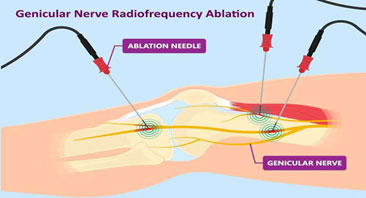
Introduction
Knee osteoarthritis is an age-related long-term progressive condition that is a burden on both the society and the healthcare system. As obesity and longevity increase, so does the prevalence of knee OA. Educating the patient about physical exercises and interventional and surgical techniques are key to managing it. Pain, muscle weakness, stiffness in the morning hours, lack of stability in the joint, crepitus and inability to perform some tasks are characteristic of the condition. The treatment strategies for knee OA are dependent upon the stage of illness. The early stage of the disease is controlled by structured exercise program and minimal intervention pain management techniques. Joint replacement is a popular surgery in individuals with end-stage knee OA. However, those who are not willing for surgery or not fit for surgery or those who have persistent pain after surgery are managed effectively with interventional pain management techniques.
Non-Pharmacological Methods
Current clinical practice guidelines recommend patients’ education and self-management, exercise, and weight loss (for overweight or obese patients) as the first-line of treatments for knee OA.
Patient education plays an essential role in decision making, disease self-management, and medication adherence of individuals with knee OA. A well-established physical activity and exercise therapy reduces symptoms. In pre-existing OA patients, 150 minutes/week of moderate intensity aerobic exercises or 2 days/week of moderate-to-vigorous physical activity and muscle-strengthening (quadriceps) exercises are beneficial.
Osteoarthritis is not an inevitable part of getting older and the symptoms of OA knee vary from person to person.
Interventional Pain Management Methods
Pain management techniques can be used for any stage of the disease. Treatment involves addressing the symptoms till the later stages are reached which might need knee replacement. Recent advances in the field of pain management techniques include genicular nerve radiofrequency ablations, prolotherapy, platelet-rich plasma (PRP), and cryoneurolysis.
Prolotherapy
This technique involves injections around the target ligaments and tendons of the knee joint. Prolotherapy reinforces injured connective tissue and as a result, lessens pain and improves mobility.
PRP Injection
Nowadays, this technique has garnered a lot of attention for treating osteoarthritis anywhere in our body. This autologous biological product contains many growth factors which facilitate tissue remodelling and thereby improve the function of the knee joint.
Thermal Methods

Both cryoneurolysis and RF ablation procedures are included in this heading. But the widely available technique is the genicular nerve RF ablation technique. This technique is suitable for those who are not fit for knee replacement surgery, who want to postpone the surgery for certain reasons and finally for those who have persistent pain after knee replacement surgery.
Non-surgical methods at hand for handling knee OA are many.
Conclusion
Knee osteoarthritis is a global health problem and hence new methods to manage pain, improve function and limit disease advancement are constantly being explored. Each method has its own benefits. Therefore, depending on the patient’s profile, disease severity and clinical efficacy, one should choose the most appropriate procedure for effective pain management.

Dr. Karthick Raja
Consultant Anaesthesiologist
Kauvery Hospital Chennai

